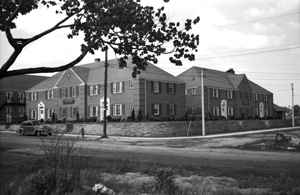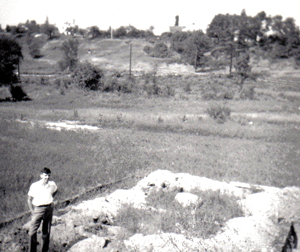

Archival Exhibit April 23-28
What are the Layers of Leaside?
For details, photos and artifacts, you’ll need to be at the Leaside Library. In the meantime, though, here’s a quick look through (courtesy of Geoff Kettel):
Layer 1 – pre-history and pre-settlement:
Formed by a series of ancient ice ages, the latest of which formed Lake Iroquois, whose northern shores were just north of present-day Eglinton Ave., and whose earliest humans were Paleo-Indians who arrived about 9,000 years ago.
Layer 2 – Pioneers and Early Settlement (1800 to 1910):
This becomes the story of the Lea family, the Elgies, and the coming of the railways.
Layer 3 – Early industrial development (1910 to 1929):
The need of the railways for worker accommodation inspired the planning of a town, but what really took off were the various industries, Canada Wire and Cable, Durant Motors and the airfield.


Layer 4 – Late industrial and tract development (1930 to 1964):
This is the town’s building boom. See how quickly the town gets built out, and learn about the early developers/builders, such as Mayor Henry Howard Talbot.
Layer 5 – Modern Transition and Thorncliffe Park development (1955 to 2000):
Leaside remained an independent municipal entity as the Town of Leaside until amalgamation with the Township of East York in 1967 to form the Borough of East York, which endured until the next amalgamation into the City of Toronto in 1998. Thorncliffe Park went from being a racetrack to being a high-rise community.
Layer 6 – Recent and Contemporary (2000 to 2013):
Industries moved away, and commercial sites move in. Thorncliffe is described as Canada’s “Arrivals City”.
The need of the railways for worker accommodation inspired the planning of a town, but what really took off were the various industries, Canada Wire and Cable, Durant Motors and the airfield.


